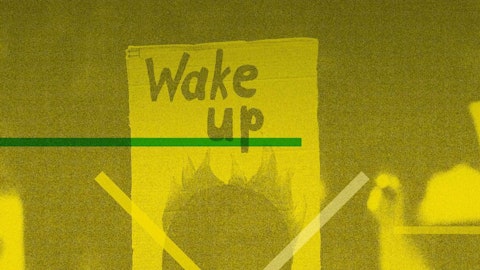Perspectives

Things have gotta change. But first, you’ve gotta get mad! … You’ve gotta say, ‘I’m as mad as hell, and I’m not gonna take this anymore!’ Then we’ll figure out what to do.
These words by screenwriter Paddy Chayefsky for the movie Network (and recently repopularised by The Chemical Brothers) capture the social unrest of 1970s America – but they also resonate with the explosion of climate protest worldwide.
In September 2019, four million people marched in 150 countries, forming the largest structured climate protest in history. And, through further protests – coordinated via peer-to-peer communication – pressure is building for climate policy to be accelerated.
Why now?
What were the triggers? And can the protests achieve political change, as the civil rights movement did before them, in the short time left to stabilise the climate?
For the last three decades, the ‘super-wicked problem’ of climate change has insidiously crept up on us. The gradual nature of the threat – combined with human short-term ‘loss aversion’, plus relentless obfuscation by vested interests – led to a ‘spiral of silence’ on the issue. The climate action movement largely endeavoured to avoid alarmism (for fear of scaring heads into the sand); instead, positive, solutions-led ‘green growth’ narratives were modelled to drive engagement on the opportunity for a low-carbon transition.
The seismic rise in coverage has pushed eco-anxiety to new levels, turning climate action into a zeitgeist
But, in the last two years, the severity and frequency of climate-related impacts has reached alarming levels: Mother Nature has seized the narrative. Devastating Californian wildfires, supercharged cyclones in Mozambique, record flooding in the UK and prolonged droughts and unprecedented bushfires in Australia are some of the recent, visceral signals that nowhere is immune to climate breakdown. The resulting seismic rise in coverage has pushed eco-anxiety to new levels, turning climate action into a zeitgeist. Climate took centre stage at Davos for the first time this year, with the World Economic Forum’s annual risk report setting the tone – showing that all five of the world’s most probable risks are related to climate, including extreme weather events, runaway emissions and biodiversity loss.

Sydney climate change protest 2019
Similar to Vietnam in the 1970s, the groundswell of climate protest has originated from young people, as they stand to be most affected. Like a modern-day Rosa Parks, Greta Thunberg is a lightning rod for teenagers the world over, illuminating the intergenerational shame of inaction. Greta is living proof that ‘…a small group of thoughtful, committed citizens can change the world'. Her solitary ‘school strike for climate’ outside the Swedish Parliament in March 2019 was joined by a million concerned kids.
Language matters
Extinction Rebellion (XR)’s civil disobedience movement, which began in London in 2018 and has expanded to more than 50 countries, has been another key driver of climate protest. XR’s demand for governments to ‘tell the truth’ has led 1,385 jurisdictions in 25 countries – and local governments covering more than 800 million citizens – to declare a ‘climate emergency’.
The introduction of this language has created a ‘radical flank effect’, when mainstream population is awakened to an issue by an outlying group. The declarations have attracted ‘ordinary’ people to protest, since emergencies demand urgent, country-wide action. Public expectations are a powerful motor for policy, especially in developed countries where physical, financial and emotional stability are viewed as an entitlement. If the state fails to act when ‘the house is on fire’, is it actually fulfilling its role?
A tipping point for social change?
Harvard political scientist Erica Chenoweth estimates the tipping point for political change is reached when 3.5% of a population protest. Essentially, the principles of protest – i.e. harnessing widespread support for an issue – haven’t altered much since the Suffragettes. However, digital campaigning is a key accelerator and multiplier. In the Arab Spring, for example, social media was instrumental in coordinating protests and harnessing international support leading to the overthrowal of four, decades-long dictatorships between 2010–14.
The speed of emissions cuts that governments need to stabilise the climate would require technology to be forcefully scaled-up at an unprecedented rate
Pioneering financial analysis has recently alerted investors to an ‘inevitable policy response’ that is forecast to occur between 2023–25 as the economic, environmental and social realities of climate change catch up with governments. The signs are emerging, with climate now a key election issue in countries such as Australia, and many Americans are calling the 2020 US election ‘a referendum on climate change’. The speed of emissions cuts that governments need to stabilise the climate would require technology to be forcefully scaled-up at an unprecedented rate, foreclosing legacy energy systems. In other words, the transition is forecast to be forceful, abrupt and disorderly.
System-level change – whether driven by last-ditch policy to meet the Paris goals, or to transform the resilience of societies in the face of unavoidable impacts, or both – is coming. Preserving stability through the coming disorder requires a new social contract between government and the public.
The confronting juxtaposition of clauses in ER’s own motto, ‘Hope dies, action begins’, has ignited widespread climate protest. But this type of language may not drive the long-term transformation we need, since, in evolutionary terms, fear is only a short-term response to promote survival. To guard against the onset of despair – which, combined with the current environment of populism and protectionism, is sure only to lead to further denial – we need a framework for cooperation.
Jonah Sachs has called marketers ‘today’s myth makers, providing society with explanation, meaning and ritual’. Given the reconfiguration of society that we face in the coming decade, all institutions – from governments to cities, civil societies and brands – can play a role in shaping a restorative vision for the future. But first, they must clearly articulate their commitment to operating within planetary boundaries. The upcoming COP26 climate summit in Glasgow in November provides a key moment for non-governmental actors, including business, to stand in support of the ratcheting up of the climate targets we need for a safe climate.
To mobilise society, we now need a new, inclusive, intergenerational narrative that re-establishes trust in our ability to adapt, and to prioritise the natural world upon which we depend for survival. In joining 80,000 other people in the 2019 Sydney climate protest, I couldn’t help but feel the upswell of contagious emotion – especially hope – created there. It wasn’t just a passive ‘hope for the best’, but a powerful collective belief in the chance for a positive future, and the intent to actively realise it.








